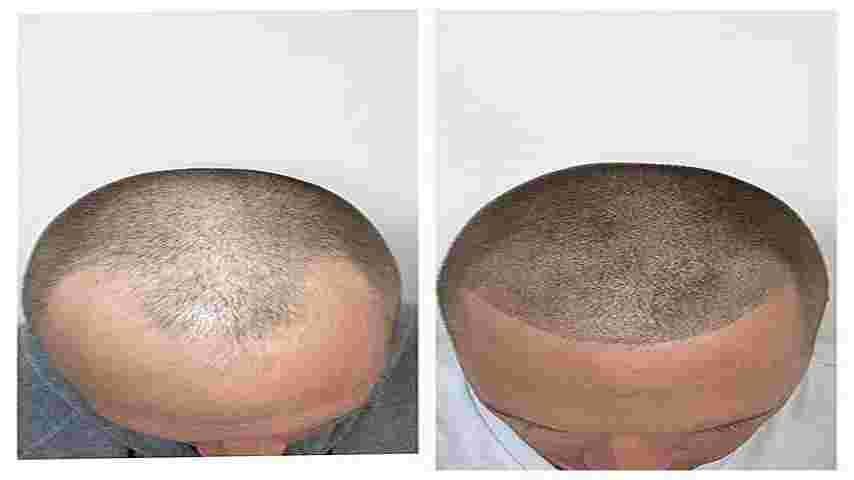Hair loss and thinning have quietly become universal challenges, touching lives across genders and ages. As the pursuit for safe, effective solutions intensifies, Low Level Laser Therapy (LLLT) has emerged as a beacon of hope. With its non-invasive nature and scientifically backed efficacy, LLLT is increasingly considered a breakthrough in promoting not just hair regrowth but also enhancing hair strength and volume. Let’s unpack how this cutting-edge technology revitalizes your locks from root to tip.
What Exactly is Low Level Laser Therapy?
Low Level Laser Therapy, often dubbed "cold laser therapy," employs low-power lasers or light-emitting diodes (LEDs) to gently irradiate scalp tissues. The light energy penetrates the skin layers without generating heat, targeting hair follicle cells at a molecular level. Unlike surgical interventions or chemically intensive options, LLLT offers a painless, side-effect-free alternative, typically delivered through wearable devices like laser caps, helmets, or handheld combs.
The Cellular Magic Behind LLLT
The transformative power of LLLT lies in its ability to stimulate mitochondrial activity within scalp cells. Mitochondria, the "powerhouses" of cells, are activated by red or near-infrared wavelengths (typically 630–670 nm), leading to increased production of adenosine triphosphate (ATP). This surge in ATP fuels cellular repair, accelerates metabolism, and jumpstarts dormant hair follicles.
Here’s how LLLT reshapes hair health:
- Boosted ATP Synthesis: Energizes underperforming or miniaturized follicles to resume active hair production.
- Enhanced Microcirculation: Improves blood flow, ensuring follicles receive a richer supply of nutrients and oxygen.
- Anti-inflammatory Action: Calms scalp inflammation, creating a healthier environment for hair growth.
- Potential DHT Regulation: Some studies suggest LLLT may mitigate the impact of dihydrotestosterone (DHT), a hormone linked to pattern baldness.
Tangible Benefits You Can Expect
- Thicker, More Resilient Hair
LLLT nurtures hair shafts from their very foundation. Users often report that their strands become noticeably denser, shinier, and less prone to breakage within months of consistent use. - Increased Hair Count and Density
By coaxing follicles from their resting phase (telogen) back into the growth phase (anagen), LLLT encourages the sprouting of new hair, visibly improving scalp coverage. - Revitalized Scalp Health
A well-oxygenated and nourished scalp not only supports stronger hair but also minimizes dandruff, itchiness, and irritation—common obstacles to healthy hair growth. - Universally Compatible
Whether you're grappling with androgenetic alopecia, age-related thinning, or post-partum shedding, LLLT offers a versatile solution suitable for a variety of hair types and conditions.
Expert Opinions: Why Trichologists Endorse LLLT
Renowned trichologists highlight that LLLT’s success hinges on two pillars: consistency and combination therapy. Dr.SandeepMathur, a scalp health specialist, remarks, “LLLT is not an overnight miracle. However, with 3-4 sessions weekly over 4-6 months, patients often experience significant improvements in hair quality and reduced hair fall. Pairing it with nutritional supplements or topical treatments enhances outcomes.”
Your Roadmap to Effective LLLT Use
To extract the full benefits of Low Level Laser Therapy, here’s a step-by-step guide to follow:
- Invest in the Right Device
Choose an FDA-cleared device that emits clinically validated wavelengths (ideally between 630–670 nm). Look for devices with robust clinical trial backing and user-friendly designs. - Adopt a Regular Routine
Most experts recommend sessions lasting 15–30 minutes, 3 to 4 times per week. Stick to the schedule to maintain consistent stimulation of hair follicles. - Set Realistic Expectations
While some users notice early signs of improvement within 12 weeks, significant changes typically manifest around the 4 to 6-month mark. - Combine and Conquer
Augment LLLT with balanced nutrition (rich in biotin, zinc, and iron), gentle scalp massages, and doctor-prescribed topical therapies like minoxidil for synergistic benefits. - Monitor Progress
Regularly take photographs and track shedding patterns to gauge improvements objectively. Consultation check-ins with a trichologist can refine your treatment approach as needed.
Are There Any Risks?
One of LLLT’s most attractive qualities is its strong safety profile. Side effects are rare and generally mild, such as transient scalp warmth or tingling. However, using certified devices as directed is crucial to minimize any adverse outcomes.
Conclusion
Low Level Laser Therapy bridges the gap between high-tech innovation and natural biological healing. By invigorating scalp cells, enhancing nutrient flow, and awakening dormant follicles, LLLT empowers users to reclaim thicker, stronger hair—without needles, drugs, or surgery. If hair thinning has left you searching for answers, LLLT might just be the gentle yet powerful ally you’ve been seeking.
Considering starting LLLT? A consultation with a qualified trichologist can guide you to the most suitable device and regimen tailored to your hair’s unique needs. Your journey to revitalized, voluminous hair could very well begin with the flicker of a red light.
How PRP Treatment Boosts Hair Growth and Improves Hair Quality
The Truth about Dandruff: Causes, Treatments, and Long-Term Relief




